“Luka” and “Katyusha” against “Vanyusha”
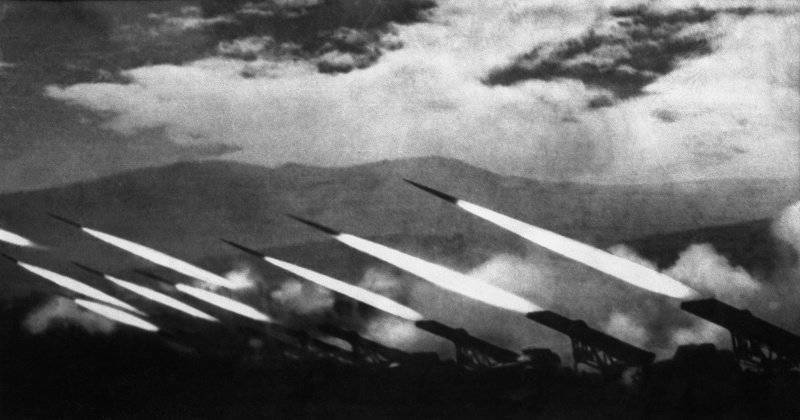
or a story about how “Katyusha” became “Katyusha” and ousted stories important hero "Luka" with indecent, but quite front-line "last name"
About "KATYUSHA" - multiple rocket launchers, it is written here, perhaps, more than about any other form weapons. Nevertheless, since until now, despite all the laws and decrees, archival documents of the Great Patriotic War period are inaccessible to an independent researcher, together with objective information the reader receives a fair dose of half-truth, outright lies and sensations sucked from the fingers of dishonest journalists. Here and the search for the father of Katyusha, and the exposure of the "false father", endless tales of the mass execution of German Katyusha tanksand the mutants on the pedestals are rocket launchers, somehow mounted on ZIS-5 cars on which they never fought, or even on post-war cars, pretending to be military relics.
In fact, in the Great Patriotic War, dozens of types of unguided missiles and launchers were used. The name “Katyusha” was not used in official documents, but was coined by soldiers. Usually "Katyushas" called 132-mm projectiles M-13, but often this name extended to all PCs. But the M-13 projectiles also had several varieties and several dozen types of launchers. So it’s not the case here to look for a “genius progenitor”.
Since the 10th century, the Chinese have used rockets with powder engines in combat operations. In the first half of the 19th century, rockets were widely used in the European armies (the rockets of V. Kongrev, A.D. Zasyadko, K.K. Konstantinova, and others). But by the end of the century they were removed from service (in Austria in 1866, in England in 1885, in Russia in 1879). This was due to the success in the development of rifled artillery and the domination of the doctrine, according to which all the tasks of a field war could well solve the 75 — 80-mm divisional gun. At the end of the 19th and the beginning of the 20th century, only a flare rocket remained in service with the Russian army.
Fundamentally new was the use of smokeless slow burning powder in rockets. 3 March 1928, produced the world's first launch of such an 82-mm rocket designed by Tikhomirov-Artemyev.
The flight range was 1300 m, and a mortar was used as a launcher.
The caliber of our rockets of the period of the Great Patriotic War 82 mm and 132 mm was defined as nothing more than the diameter of the engine's checkers. Seven 24-mm powder checkers, tightly packed into the combustion chamber, give the diameter 72 mm, the thickness of the chamber walls - 5 mm, hence the diameter (caliber) of the 82 mm rocket. Seven thicker (40-mm) checkers in the same way give the caliber 132 mm.
The most important issue when designing a PC is a method of stabilization. Soviet designers preferred operatic PCs and adhered to this principle until the end of the war.
In the 30-e years were tested rockets with a ring stabilizer, not beyond the dimensions of the projectile. So it was possible to shoot from the tubular rails. But tests have shown that using a ring stabilizer to achieve a stable flight is impossible. Then they shot 82-mm missiles with a four-bladed tail in 200, 180, 160, 140 and 120 mm. The results were quite definite - with a decrease in the size of the plumage, the stability of flight and accuracy were reduced. The plumage with a span of more than 200 mm shifted the center of gravity of the projectile back, which also worsened the stability of the flight. The relief of plumage by reducing the thickness of the blades of the stabilizer caused strong oscillations of the blades up to their destruction.
Grooved guides were adopted as launching rockets for feathered missiles. Experiments have shown that the longer they are, the higher the accuracy of the shells. The length for PC-132 was maximum - 5 m due to the limitations on railway dimensions.
In December, 1937 82-m missiles (PC) entered service with the I-15 and I-16 fighters, and in July, the PC-1938 adopted the 132 fighters.
Adoption of the same shells for ground troops was delayed for many reasons, the most important of which was their low accuracy. According to the experience of the Great Patriotic War, we consider 82-mm and 132-mm rocket projectiles as high-explosive fragmentation, although initially the filling was incendiary and poisonous substances. So, in 1938, the 132-mm rocket chemical projectile RSX-132 was adopted. Another issue is that incendiary projectiles proved to be ineffective, while chemical ones were not used for political reasons.
The main direction of improving missiles during the Great Patriotic War was to improve accuracy and increase the weight of the warhead and flight range.
Missiles were ineffective when firing at small targets due to huge dispersion. Therefore, the use of PC for tank shooting is almost impossible. So, even according to the 1942 g. Firing tables with 3000 m firing range, the range deviation was 257 m, and the side range was 51 m. For smaller distances, the range deviation was not cited at all, since the dispersal of the projectiles could not be calculated. It is easy to imagine the probability of hitting a PC in a tank at such a distance. If, theoretically, the war machine somehow manages to shoot at the tank at close range, then the initial speed of the 132-mm projectile is only 70 m / s, which is not enough to penetrate the armor of a "tiger" or "panther". It is not without reason that the year of publication of the shooting tables is specified.
According to the shooting tables of the TC-13 of the same PC M-13, the mean deviation in range in 1944 is 105 m, and in 1957 g. - 135 m, lateral, respectively - 200 and 300 meters. Obviously, rather, the 1957 g tables, in which the dispersion increased almost 1,5 times.
During the war, domestic designers worked continuously to improve the accuracy of PC with wing stabilizers. For example, a reduced-range M-13 projectile with a TC-14 ballistic index was created, which differed from the classical M-13 (TC-13) only in lower weight of the powder engine, but with somewhat greater accuracy and distance (traces).
The main reason for the low accuracy of PC type M-13 (TC-13) was the eccentricity of the rocket engine thrust, i.e. the displacement of the thrust vector from the rocket axis due to the uneven burning of gunpowder in checkers. This phenomenon is easily eliminated when the rocket rotates, then the impulse of the thrust force will always coincide with the rocket axis. The rotation imparted to the feathered rocket in order to improve accuracy is called cranking. Rotations with cranking should not be confused with turbo-jets.
The speed of rotation of feathered missiles was several dozen, at best, hundreds of revolutions per minute, which is not enough to stabilize the projectile by rotation (and the rotation takes place on the active part of the flight (while the engine is running) and then gradually stops. The angular velocity of turbojets without feathers , is several thousand revolutions per minute, which creates a gyroscopic effect, and, accordingly, a higher accuracy of hitting than that of feathered projectiles, both non-rotating and with turning. boih types of projectiles rotation occurs due to the expiration of propellant gases core engine through small (a few mm in diameter) of the nozzle directed at an angle to the axis of the projectile.
We called rockets with propelling due to the energy of powder gases, CC - improved accuracy, for example, M-XNUMHUK and M-13UK. In addition, the rotation of the projectile could be created in other ways. So, for example, in 31, M-1944 (TC-13) and M-46 (TC-31) shells were received, differing from conventional non-rotating TC-47 and TC-13 only due to curved tailgate feathering, due to which cranking projectile in flight. Spiral guides have become an effective tool for turning any feathered projectiles.
Tests of prototype spiral guides began in the middle of 1944 g. In addition to rotating the projectiles, the spiral guides had a higher survivability than the straight guides, since they were less exposed to powder gases.
By April, 1945 produced 100 combat vehicles B-13-CH (CH - spiral guides), formed the first units, armed with them. When firing from the BM-13-CH, the accuracy of the M-13 and M-13 UK projectiles was almost the same.
The second direction of development of domestic PCs was the creation of powerful high-explosive shells, since the high-explosive effect of the PC M-13 is small. In June, the high-explosive 1942-mm M-132 projectile, which differed from the M-20 in heavier warhead and, consequently, lower firing range, was put into service with 13. Nevertheless, the high-explosive effect of M-20 was also soon considered insufficient, and in the middle of 1944 its production was discontinued.
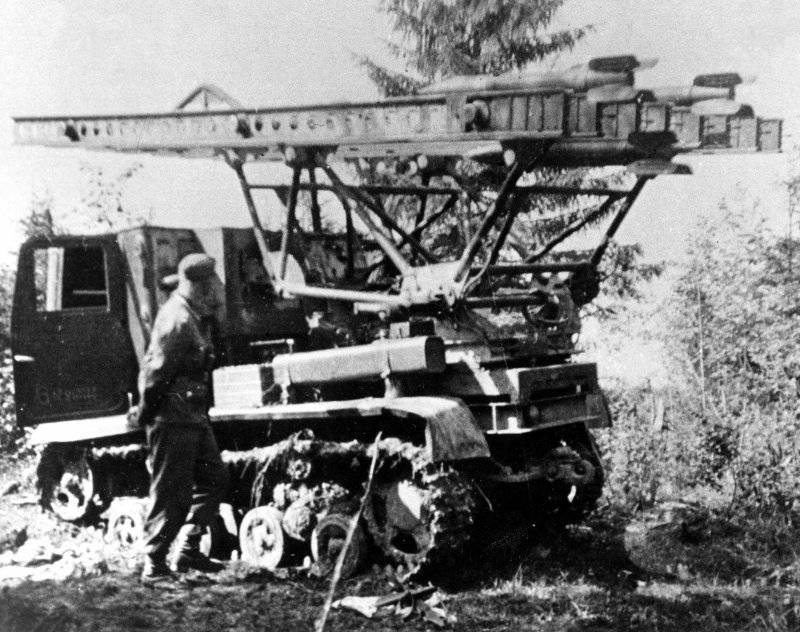
More successful was the M-30 projectile, in which a powerful over-caliber warhead, made in the form of an ellipsoid, joined the M-13 rocket engine. It had a maximum diameter of 300 mm. For the characteristic form of the head part of the M-30, the front-line soldiers called Luka M ... vym (the hero of the famous erotic poem of the same name). Naturally, this nickname, in contrast to the replicated "Katyusha", the official press chose not to mention. The Luka, like the German 28-cm and 30-cm shells, was launched from a wooden packing box in which it was delivered from the factory. Four, and later eight such boxes were placed on a special frame, as a result of which the simplest launcher was obtained. The powerful head of the M-30 had an unsuccessful aerodynamic shape, and the accuracy of fire was 2,5 times worse than that of the M-13. Therefore, M-30 projectiles were used only massively; at least three M-1 divisions were to be concentrated on the 30 km of the breakthrough front. Thus, no less than 1000 shells hit the 576 of the enemy’s defense line. According to the stories of the front-line soldiers, part of the M-30 projectiles got stuck in the closures and flew with them. It is interesting what the Germans thought, watching the wooden boxes tumbling around them flying.
A significant drawback of the M-30 projectile was its short range. This deficiency was partially eliminated at the end of 1942, when the new 300-mm high-explosive PC M-31 with a range of 1,5 was created more times. In the M-31 the head part was taken from the M-30, and the rocket was developed anew, and the engine of the experimental PC M-14 was used as the basis for its design.
In October, 1944 was adopted by the long-range PC M-13-DD. It was the first projectile with a two-chamber rocket engine. Both cameras were regular cameras of the M-13 projectile and were connected in series by an intermediate nozzle, which had eight oblique slots. Rocket engines worked simultaneously.
The first installations for firing M-13 had the index BM-13-16 and were mounted on the chassis of the ZIS-6. 82-mm PU BM-8-36 was mounted on the same chassis.
There were only a few hundred ZIS-6 cars; at the beginning of 1942, their production was stopped.
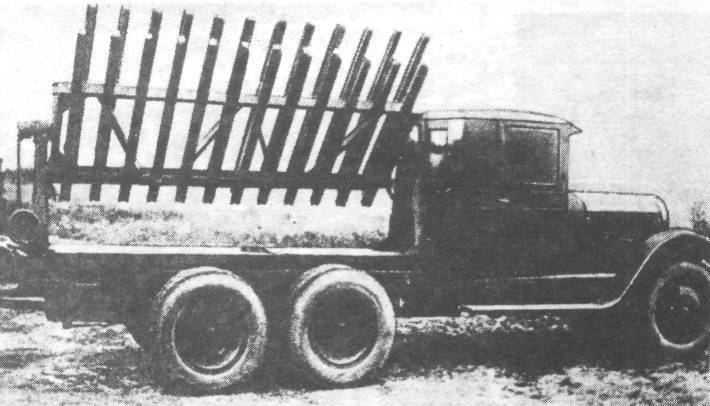
The launchers of the M-8 and M-13 missiles in 1941 — 1942. mounted on anything. So, 6 guides M-8 installed (on machine tools from Maxim machine gun, 12 guides M-8 on a motorcycle, sleigh and snowmobile (M-8 and M-13), tanks T-40 and T-60, armored railway platforms ( BM-8-48, BM-8-72, BM-13-16), river and sea boats, etc. But mainly PU in 1942 — 1944 were mounted on cars received under lend-lease - “Austin ”,“ Dodge ”,“ Ford-Marmon ”,“ Bedford ”, etc. For the 5 years of war, the 3374 (6%) was used by 372 (11%) for 1845 years of war from the 54,7 used for chassis combat vehicles, and 17 (1157 %), for other 34,3 types chassis (except for “Willis" with mountain launchers) - 1943 (13%). Finally it was decided to standardize combat vehicles based on the Studebaker car. In April, 1944 adopted this system under the symbol BM-31Н (normalized). March 31 was adopted self-propelled launchers for M-12 projectiles on the Studebaker chassis BM-XNUMX-XNUMX.
But in the post-war years, it was ordered to forget about the Studebaker, although the combat vehicles on its chassis were in service until the beginning of the 60s. In secret manuals Studebaker was called the “cross-country vehicle.” Katyusha-mutants on the ZIS-5 chassis or post-war types of cars, which are persistently issued by guides for genuine combat relics, ascended on numerous pedestals;
The tactics of the use of rockets significantly changed by the beginning of 1945, when the fighting shifted from the boundless Russian fields to the streets of German cities. Beating at small targets with rockets became almost useless, but they turned out to be very effective when firing at stone buildings. Almost everywhere combat vehicles were injected into the streets of cities and they shot at home the houses occupied by the enemy. There was a huge amount of handicraft made self-made single launchers carried by soldiers on their hands. The fighters dragged these and standard packages with shells to the upper floors of the houses, installed them on windowsills and fired point-blank fire at the neighboring houses. Two or three was enough to completely destroy several floors, or even the whole house.


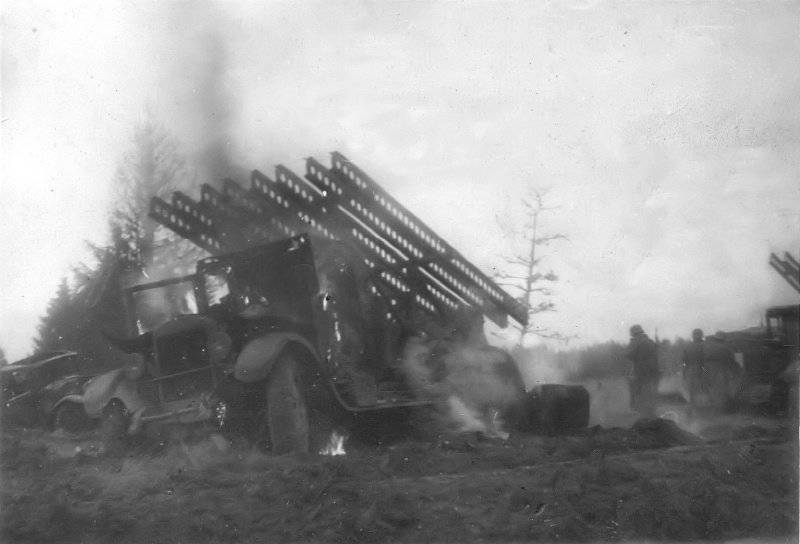
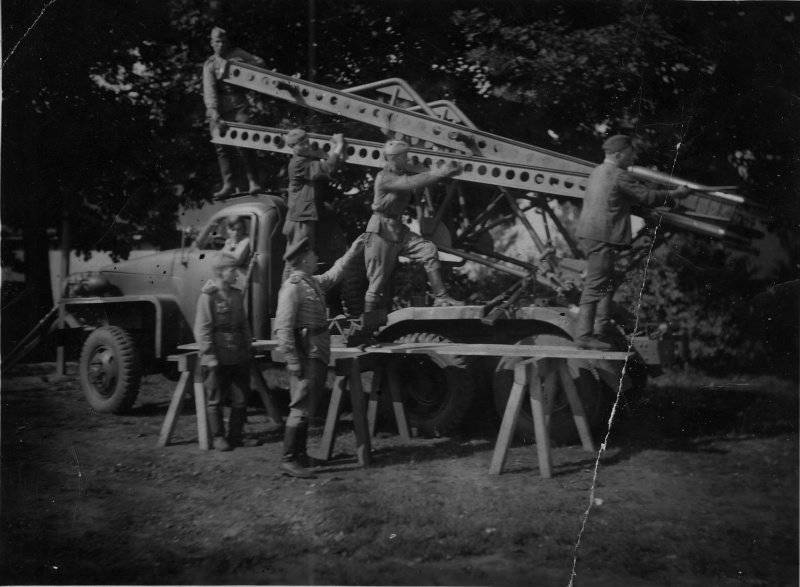
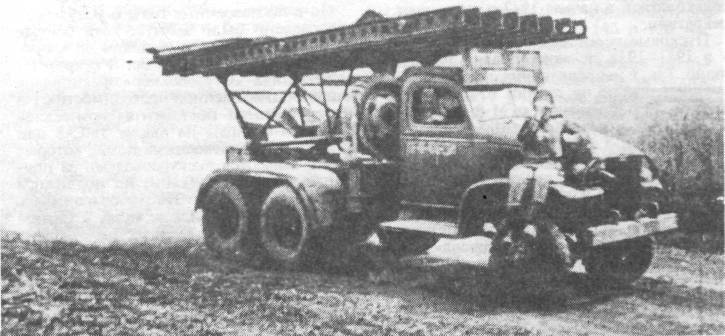
Two BM-31-12 (288 launcher) divisions and two BM-13Н (256 launcher) divisions were allocated directly for the assault on the Reichstag. In addition, many single M-30 shells were installed on the windowsills of the second floor of the Himmler’s house.
During the war, 2,4 received thousands of BM-8 installations (thousands of 1,4 were lost), the corresponding figures were thousands for 13 and 6,8 and 3,4 thousands for BM-1, and thousands for 12 and 1,8.
German designers fundamentally differently solved the problem of the stabilization of missiles.
All German PCs were turbojet. The launchers of salvo-fire systems were of cellular type (28 and 32-cm PC), or tubular (15, 21 and 30-cm).
The first German rocket launcher system was a six-barrel chemical 15-cm mortar type "D", entered into service with Wehrmacht chemical regiments in the late 30-s. His main assignment was to fire chemical mines (in the German army, rockets were called mines and tube launchers for them were mortars) weighing from 39 to 43 kg. Externally, the chemical mines differed from the high-explosive or smoke only by the presence of green or yellow rings. From 1942, the “D” mortar, the Germans began to call 15-cm Nb.W 41, i.e., smoke mortar (starter) arr. 1941. Our soldiers called this type of mortar "Ivan" or "Vanyusha."
During the war, chemical munitions were not used and the mortar fired only high-explosive and smoke mines. The fragmentation of high-explosive frag mines was 40 m in the side and 13 m forward. The smoke mine produced a cloud with a diameter of 80 — 100 m, which retained sufficient density for 40 seconds.
Six mortar barrels were combined into one unit using the front and rear clips. The carriage had a sector lifting mechanism with a maximum elevation angle of up to + 45 ° and a turning mechanism allowing rotation of ± 12 °. The combat axis of the carriage is cranked, when fired, it turns, the wheels are hung out, and the carriage rests on the openers of the deployed beds and folding front stop. The fire was fired at 6 shots in 5 seconds, the reload time of 1,5 minutes. The weight of the PU was 540 kg without ammunition.
Since April, the Germans began to manufacture 1943 10-barreled PU on the basis of the Multi-armored semi-tracked armored vehicle for firing 15-cm mines. They called them armored launchers 15 cm PW. 43. The weight of the system is about 7,1 tons, transportable ammunition 20 min, and the maximum speed on the highway was 40 km / h.
According to the “Ivan” type, the Germans created two more powerful launchers (“smoke mortars”) on wheeled carriages. This is a five-barreled 21-cm mortar 21. see Nb.W. 42 and six barreled mortar 30; see Nb.W.42. The weight of the first was 550, and the second 1100 kg.
In 1940, the production of high explosive and 28 cm incendiary mines began (32-see WK. And 28-see WK.). Both had the same engine, but differed in weight, size and filling of the head part.
The area affected by high-explosive mines reached 800 m. When directly hit one in the house, it was completely destroyed.
32-see incendiary mines were filled with 50 liters of oil. When shooting at a dry meadow or forest, one caused a fire in the square of 200 square. with a flame height of up to two or three meters. The explosion of a kilogram explosive shell mines created an additional fragmentation effect.
The minimum tabular firing range for both mines was 700 m, but it was not recommended to shoot at a distance less than 1200 m from the conditions of its own safety.
The simplest PU for 28 and 32-cm min was a heavy throwing device arr. 40 g. And arr. 41, which was a wooden or iron frame, on which there were four mines in the boxes. The frame could be installed at different angles, which made it possible to impart PU angles of guidance from + 5 ° to + 42 °. The 28 and 32-cm-min closing boxes were wooden frames with the same outer dimensions.
To increase the mobility of six throwing devices arr. 1940 or 41 mounted on semi-tracked armored vehicles (special vehicle 251).
With 1941, the heavy throwing facility arr. 41 G. (28 / 32 cm. Nb.W. 41) of the cellular type, which had, in contrast to frame installations, a sample. 40 and 41 not separated wheel course. The installation had a truss with 6 rails, in which both 28-cm and 32-cm mines could fit. Barrel truss was a two-tier structure of bar and angle steel. The weight of the PU was 500 kg, which allowed the calculation to easily roll it across the battlefield.
The 8-cm missile made by the Germans based on the X-NUMX-mm M-82 Soviet projectile stands alone. It was the only German projectile that fired from a beam-type launcher. Such PU with 8 guides installed on captured French tanks "Soma" (German name 48). In addition, PU with 303 guides installed on the already mentioned armored vehicles "Multi".
8-see shells were used mainly by the SS forces.

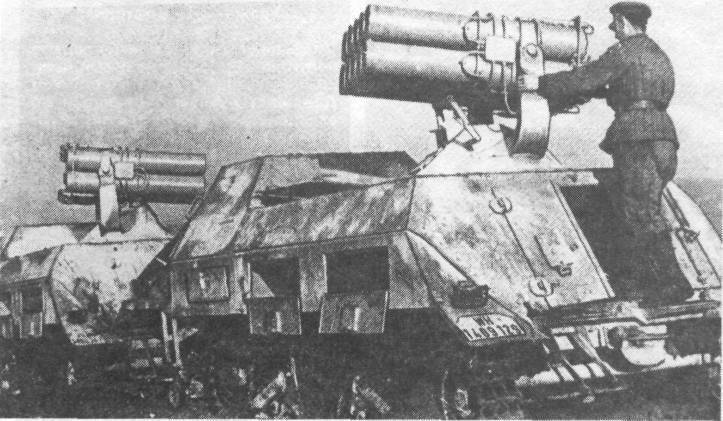
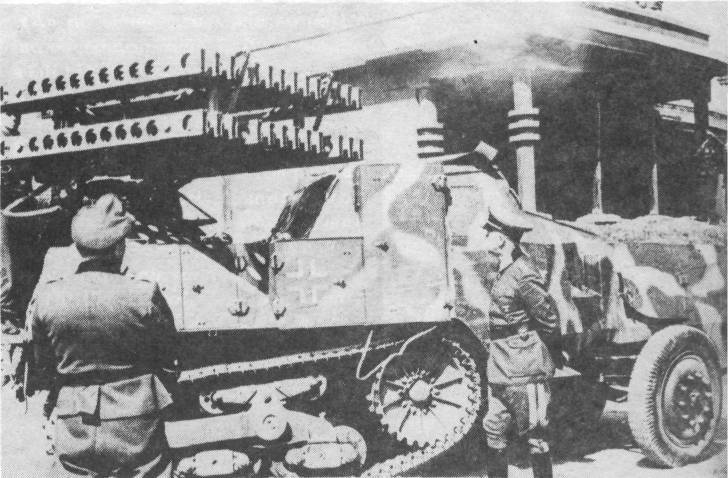
And finally, the fundamentally new system was the 38-cm RW jet plant. 61 on a special tank "Sturmtigr." Unlike all previous rocket launchers, it is not designed for salvo fire across squares, but for firing single projectiles at a specific target. 38 Turbojet High-Explosive Projectile, see R. Sprgr. The 4581 was fired from a rifled barrel with a length of 2054 mm with an initial speed of just 45 m / s. Then the jet engine accelerated the projectile to the speed of 250 m / s. Charging was done from the breech, for which PU (the Germans sometimes called it mortar) had a horizontal wedge gate. The lifting mechanism of the PU allowed an elevation angle to + 85 °.
The weight of the installation was 65 tons, frontal armor 150 — 200 mm. Ammunition 14 shells. Maximum travel speed to 40 km / h.
In 1944-1945, Henschel released 18 Shturmtigr.
At the very end of the war, the Germans created a 38-cm howitzer on a wheel drive, firing an 680-mm rocket projectile.
In early February, 1944, Krupp, began designing the ultra-long missile system R. Wa. 100. She had to have a thin-walled rifled barrel, from which a small expelling charge threw out a turbojet. At a distance of about 100, the propulsion engine began to work, accelerating it to 1000 m / s. The main purpose of the system was shooting across the English Channel. The variants with 540 and 600-mm trunks were worked out, the weight of the explosive in the projectile was supposed to be about 200 kg. As a PU, it was intended to use a converted 24-cm “Theodor” cannon rail transporter or a reinforced 60-cm ACS “Karl” chassis. The Germans managed to bring the work to the stage of prototyping. After the end of the war, these studies were used in the design of 1945 — 1946. For a similar 56 system, see CANCER in the Soviet zone of occupation of Germany.
German rocket data (min)
Production of German launchers
Production of rockets (min)
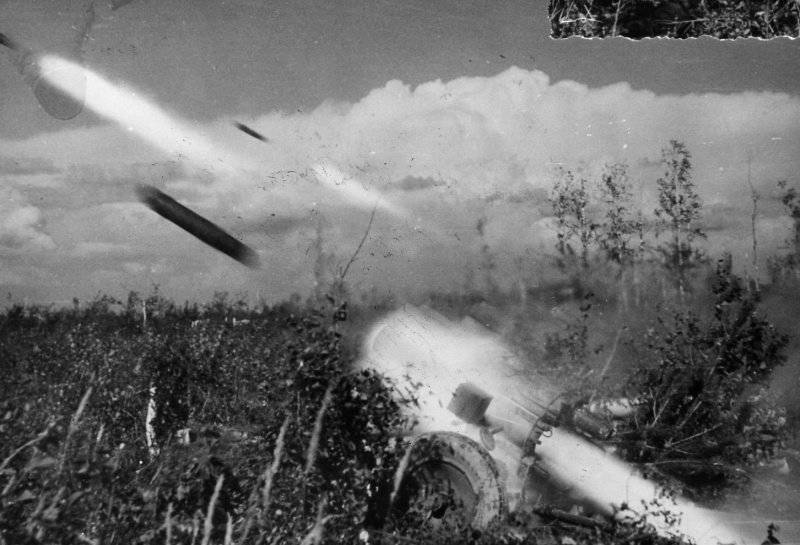
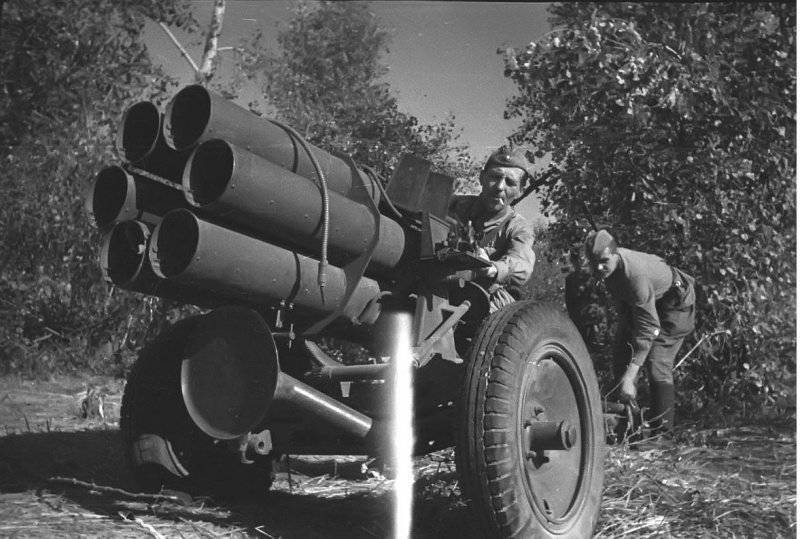
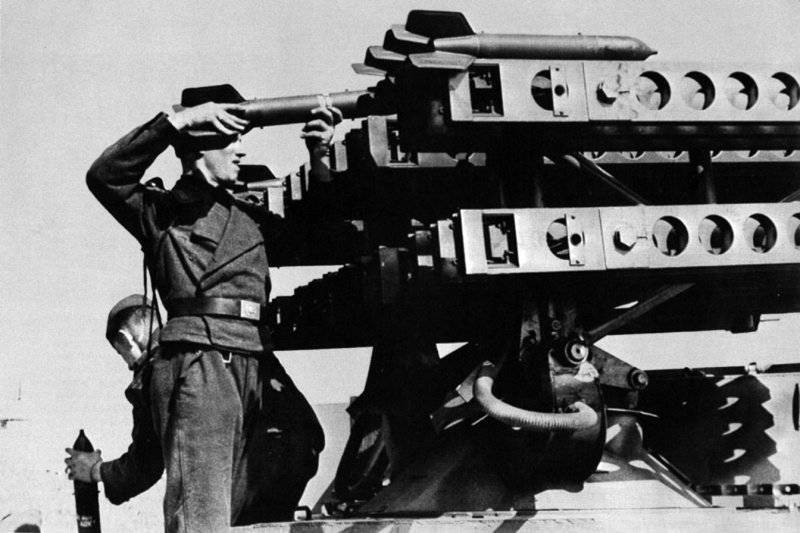
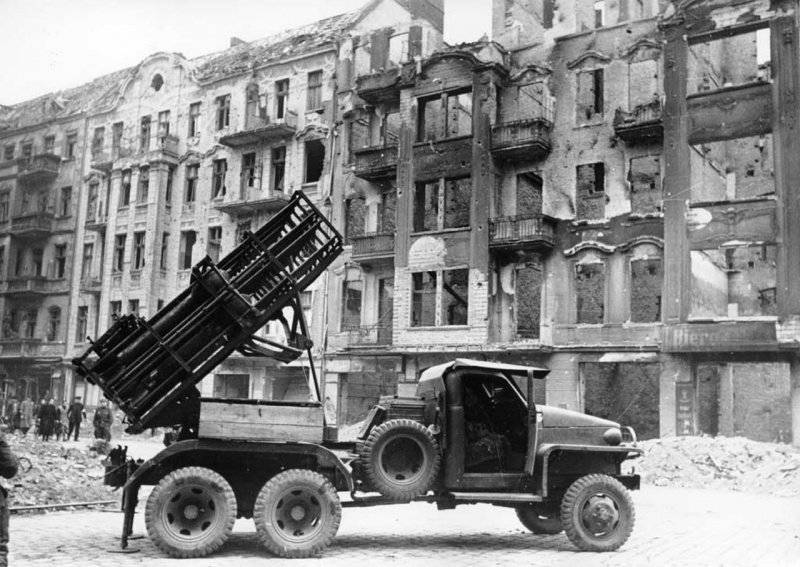
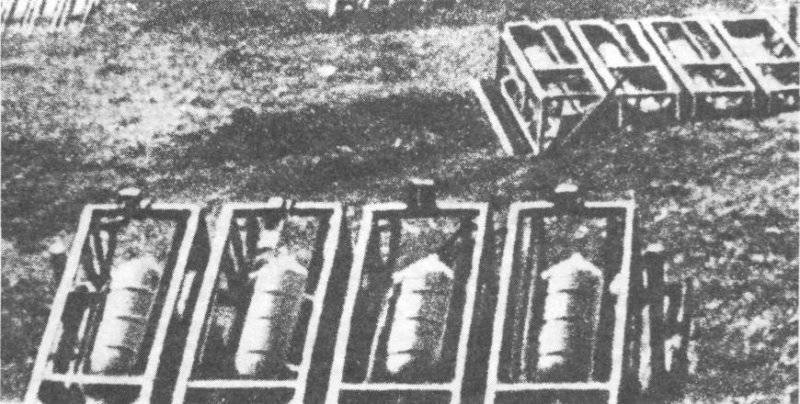

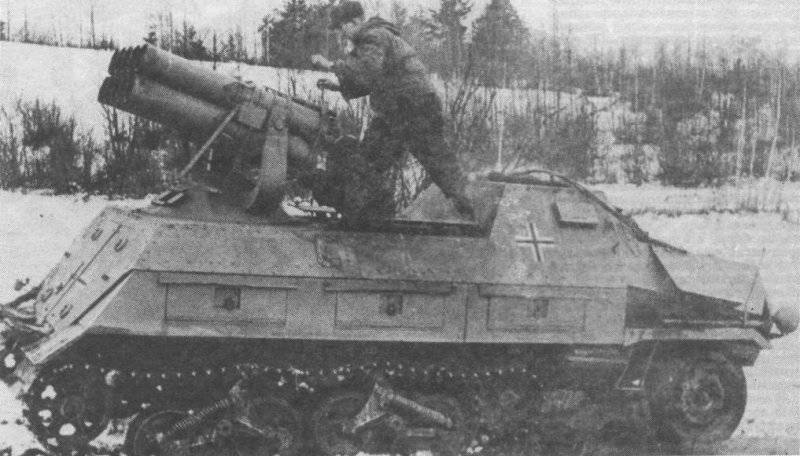
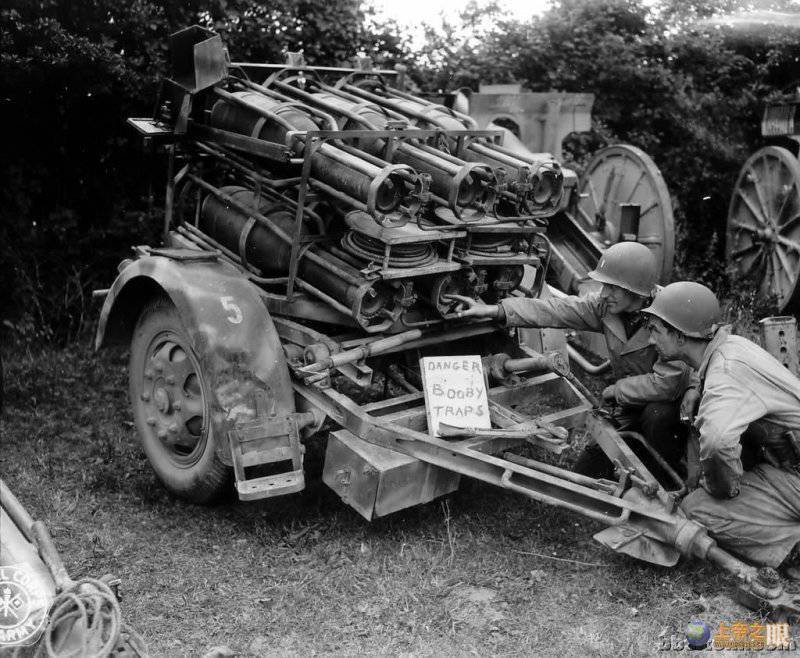




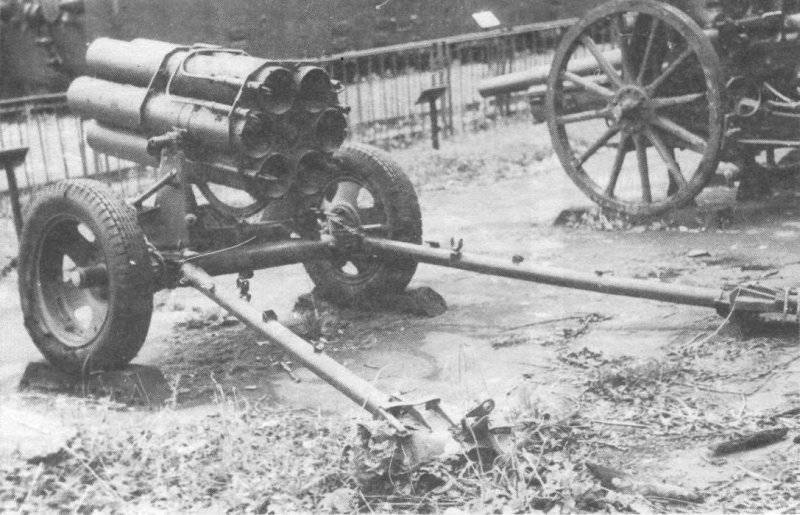

Information